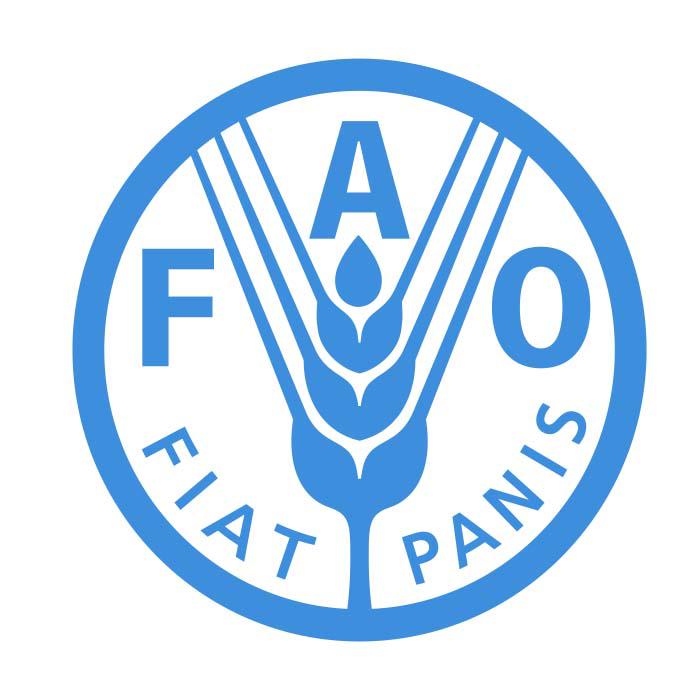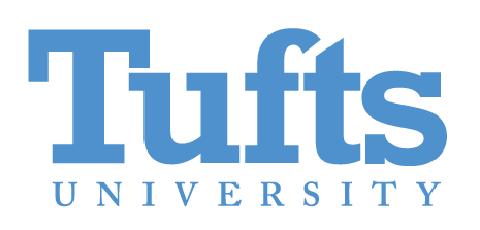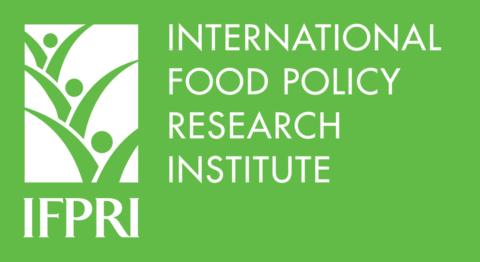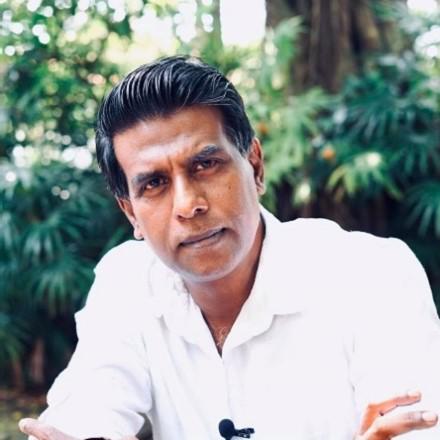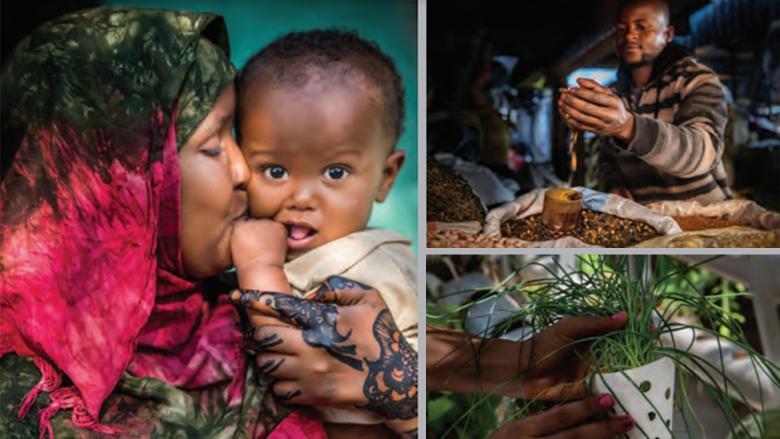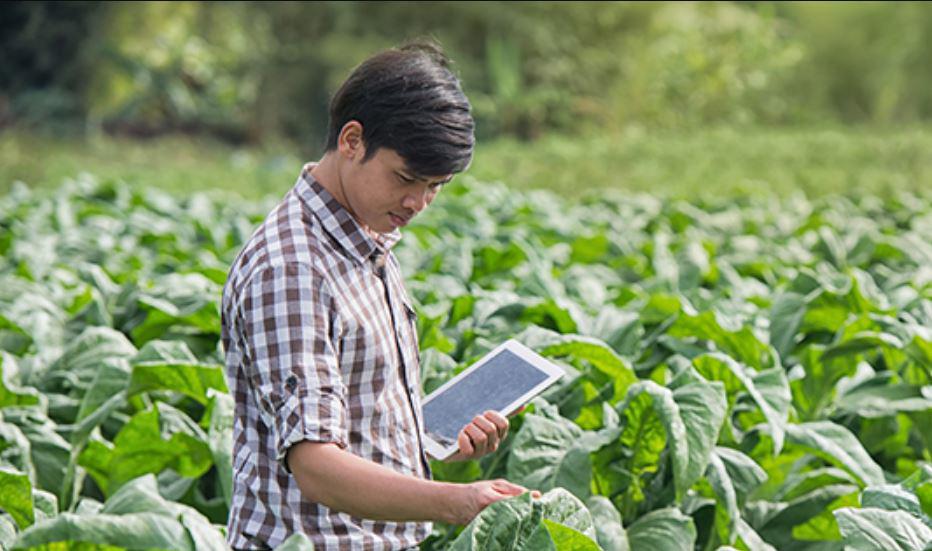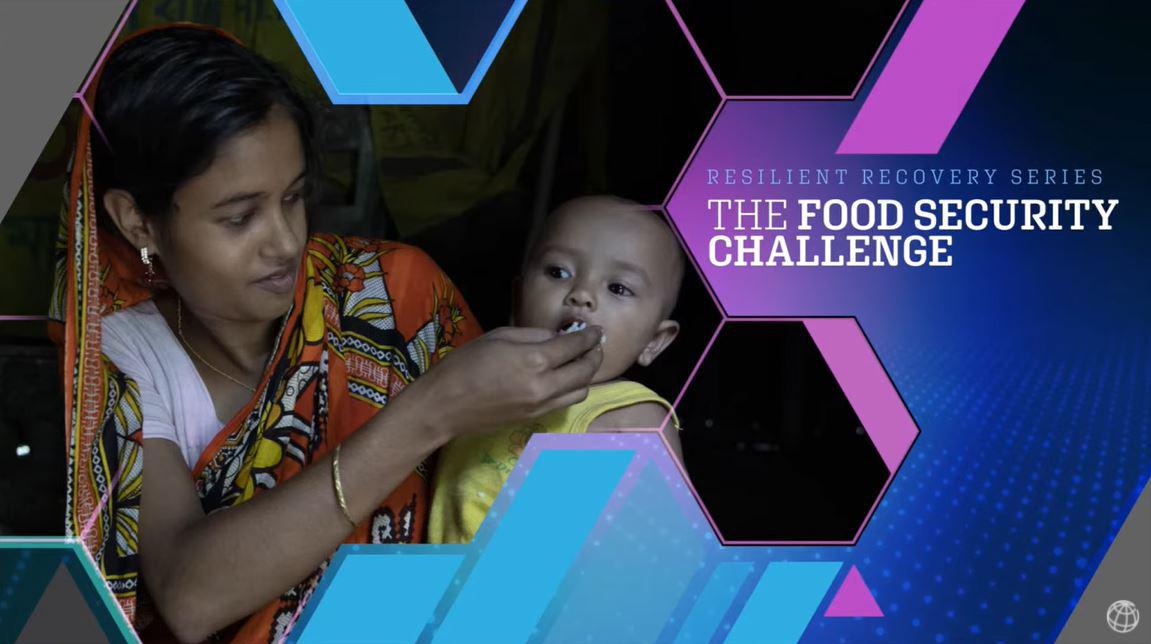[William Masters]
Welcome everyone. Thank you. Thank you so much for joining this World Bank Live event on the cost and affordability of healthy diets. My name is William Masters, I have the privilege of directing the Food Prices for Nutrition Project, and we have a truly extraordinary group of people assembled for this event today. We're live in English with interpretation in French. For everyone, please do share your thoughts and submit your questions in the chat box. Your questions will enter a queue, will be answered either by our experts within the chat box or by panelists during the Q&A. You can also join the conversation on social media, using the hashtag, #FoodPricesforNutrition. Today's event is being recorded and the video will be online to this site so you can link to that.
For further discussion, we hope you can also join us tomorrow at the same time for a policy symposium hosted by IFPRI. Links to that event are at the new Food Prices for Nutrition DataHub that's up right now on the main data.worldbank.org site. Today, the conversation is to introduce this new DataHub, to discuss the remarkable opportunities for policy analysis and guidance that opens up by what we're learning about the cost and affordability of healthy diets around the world. As you know, last week, the United Nations announced headline results for each country's total cost per day and the total population that currently cannot afford a healthy diet. That was produced for the FAO as part of the FAO, IFAD, UNICEF, WFP, WHO flagship annual report on the state of food security and nutrition in the world.
In today's discussion, we get to look behind that headline result and look ahead to their implications for the world food system. We have an extraordinary panel, global and national leaders to discuss how these diet costs and affordability data can be used to guide policies and programs. We'll hear first from our hosts at the World Bank with opening remarks from Aart Kraay, the Acting Senior Vice President and Chief Economist of the World Bank Group. Aart is a distinguished economist, superbly placed to put this work into its global context. Aart, over to you. Thank you.
[Aart Kraay]
Thanks very much, Will. It's a real pleasure to be here and it's particularly my great pleasure to welcome all of you to this event, which really couldn't take place at a more opportune time. As we know from the headlines, the world is facing a global food security crisis of alarming proportions. Record high food prices have triggered a global crisis that threatens to expand extreme poverty by millions, worsen hunger and malnutrition, and further stretch already very stretched government resources. I wish I could say that the outlook looks optimistic, but unfortunately it does not. Between COVID-19 supply chain disruptions, drought and crop losses, more recently, the adverse impact of the war in Ukraine on crop and fertilizer prices, all of which are combining towards higher food prices, which are only likely to exacerbate the current situation.
The current crisis highlights the need for crucial reforms to increase the efficiency and resilience of food systems around the world, particularly low and middle income countries, so that they can actually have the systems and the goods and the markets in place to deliver better nutritional outcomes for everyone, and particularly for the most vulnerable. The crisis is affecting many of the Bank's client countries disproportionately, and the Bank is taking urgent steps to address food insecurity, both through its lending operations and its analytical work. This includes making up to 30 billion in lending available over the next 15 months in existing and new projects to encourage food and fertilizer production, enhance food systems, facilitate trade, and support vulnerable households and producers.
These efforts on the policy and lending front are complimented by the Bank's deep analytical work in this area. As I'm sure many of you are aware, the Bank closely monitors commodity prices and provides market analysis for commodity groups, including major agricultural and food items, as well as fertilizer and energy. The Bank has an active program of work, which I myself have had the privilege of contributing to in a small way on studying statistical forecasting models that are designed to predict the outbreak of food crises for timely preventive actions. The Bank has also been conducting high frequency phone surveys, which were deployed during COVID and have been extremely valuable tools for assessing food security and insecurity status in real time.
Then most importantly, the reason that we're gathered today is to talk more about what has been done in the past several years to leverage the rich and unique global data on retail food prices from the International Comparison Program, with the secretariat of which sits with the World Bank. In collaboration with our colleagues in Tufts University, IFPRI, and FAO, the Food Prices for Nutrition project is generating new indicators measuring the cost and affordability of a healthy diet around the world. Through this project, which we're here to learn more about today, we hope to equip governments and development agencies with data that they can use to monitor this key indicator of diet cost affordability in order to inform agriculture and food systems interventions.
The findings from this work, which my colleague, Nada Hamadeh, will be presenting momentarily, are striking and they challenge us not only to greater policy efforts to address food insecurity, but also to think more deeply about more fundamental questions. It is striking, for example, that the cost of a healthy diet is estimated to be over 50% higher than the Bank's extreme poverty line, which in turn is based on the national poverty lines adopted by low income countries. The fact that a person can be considered not poor according to these poverty lines yet be far from able to afford a healthy diet, let alone other essentials, should give us pause. It should also make us consider more deeply both what these extreme poverty lines mean as well as to continue our efforts to think very hard about the difficult technical issues that the boundaries of nutrition science and development economics that need to be addressed when coming up with high quality, robust measures of the cost of a healthy diet.
I'd like to take this opportunity to just formally acknowledge and thank all our partners who are involved in this project, particularly our colleagues at Tufts, IFPRI, the FAO, as well as The Gates Foundation and the United Kingdom FCDO for their generous funding. We are all here today because our ambitions go beyond merely the eradication of hunger. People around the world need to be able to afford nutritious diets in order to live healthier lives. With that, let me turn things over to, well, either our moderator or to Nada, whoever goes next. Thank you very much.
[William Masters]
Thank you. Thank you, Aart, for that framing. Super helpful. We now, as he mentioned, Aart just mentioned, we get to hear directly from Nada Hamadeh about the Food Prices for Nutrition DataHub. Nada's a manager in the Development Data Group. She leads this work in the World Bank, and she also manages the very large International Comparison Program that Aart just mentioned from which the underlying item prices are drawn. It's been a real delight to work with her and the entire World Bank Development Data Group on this project, which Nada will now explain.
[Nada Hamadeh]
Thank you so much, Will. I will indeed take the audience now through a presentation on the Food Prices for Nutrition project, its methods, and the indicator that it produces. The UN released last week its 2022 report of the state of food security and nutrition in the world, we refer to as SOFI. The report paints a sobering picture. Almost 3.1 billion people could not afford a healthy diet in 2020. That is 112 million more people than in 2019 and 42% of the global population. Nearly three quarters of people affected live in lower middle income countries, with another 15% in low income and 12% in upper middle income countries, while just half a percent of the global population unable to afford a healthy diet live in a high income country.
SOFI highlighted changes in affordability between 2017 to 2020 and alerted readers to the uptick between 2019 and 2020 in both the number of people unable to afford a healthy diet and the share of the global population affected, reversing the previous downward trend. The uptick was seen across all income groups, but of course, those living in low and lower middle income countries remain at most risk of being unable to afford a healthy diet, at around 90% and 70% of their populations respectively. Of course, affordability depends on two factors, the cost of a healthy diet and the household disposable income available to spend on food. In 2017, the global average cost of a healthy diet was $3.31, while in 2020, it was $3.54 dollars based on current purchasing par parities for each year. The highest cost was seen in upper middle-income countries at $3.76 dollars in 2020, and lower middle-income countries experienced the highest growth in the cost, 8.9% from 2017 to 2020.
I will take you on a deep dive of the Food Prices for Nutrition project and the research on cost and affordability of a healthy diet that underlie the results reported in the SOFI. The Food Prices for Nutrition project is a partnership between Tufts University, the International Food Policy Research Institute, IFPRI, and the World Bank, in close collaboration with the UN Food and Agriculture Organization, the FAO. This project is funded by The Bill and Melinda Gates Foundation and UK Aid through the Foreign Commonwealth and Development Office of the United Kingdom. Food Prices for Nutrition was set up to provide food price measurement to help match the aspiration of attaining food security, as defined by the World Food Summit in 1996. Food security is when all people, at all times, have physical and economic access to sufficient, safe, nutritious food to meet dietary needs and food preferences for an active and healthy life.
The focus of Food Prices for Nutrition is to measure economic access through diet cost and affordability. The objective of the Food Prices for Nutrition project is to provide indicators on the cost and affordability of healthy diets to inform action to address food insecurity around the world. The indicators provide the tool to help guide food systems and agriculture interventions and monitor progress towards a global food system that brings healthy diets within reach of all people, at all times. Food prices create a ladder of diet affordability. First, an energy sufficient diet. This is the cheapest and most affordable of these diets. It provides enough calories from starchy, stable foods for a person needing 2,330 calorie per day. It's the first step on this ladder of affordability, where food prices dictate the economic access to a diet.
Second on the ladder is a nutrient adequate diet. It's more costly than an energy sufficient diet. It avoids nutrient deficiency or excess through providing a variety of foods. However, a nutrient adequate diet does not have other attributes needed for long-term health as specified in national food-based dietary guidelines. On the third step is the healthy diet. It is based on food group recommendations by national food-based dietary guidelines and is the preferred indicator for measuring access and affordability. A healthy diet meets requirements for food-based dietary guidelines, provide foods in sufficient quantities for an active and healthy life, meets energy and nutrient needs for a representative adult, protects against diet-related diseases, and is dignified and culturally appropriate.
How do we build a healthy diet basket? It's a global standard set of criteria that represents commonalities across most national food-based dietary guidelines created for the purpose of calculating and comparing the cost and affordability of healthy diets across countries. Six food groups make up the basket. Starchy staples contribute around half the calories for the basket. Three groups, oils and fats, animal sourced foods, and legumes, nuts, and seeds each contribute around 13% of calories. Fruits contribute 7% of calories. Vegetables contribute around 5% of calories. A least-cost healthy diet used by Food Prices for Nutrition uses the least expensive, locally available foods at each time and place to fulfill each food group contribution to the healthy diet basket. There are 11 food items selected in each country to make up the basket, covering the six food groups.
As I mentioned earlier, the global average cost of a least-cost healthy diet in 2020 was $3.54 dollars. Here you can see the average relative cost of each food group that form part of the total diet. The cost shares of animal sourced foods and vegetables each account for around 25% of the total cost, and fruits, 20%. The cost shares of starchy staples and legumes, nuts, and seeds in the basket are lower, around 15% and 11% respectively. With oils and fats typically accounting for around just 4%. Of course, these are global averages and relative costs are different in each country.
For example, the cost shares of the healthy diet basket for Senegal, Pakistan, and Italy are shown here. In Senegal, vegetables are the biggest cost share of the basket at 31%. In Pakistan, animal sourced foods are the largest at 30%. In Italy, fruits in the basket are the most costly at 28% of the total. Regarding the smaller shares, oils and fats have a cost share of just 2% in Italy, while that food group accounts for 6% and 9% of the total cost in Pakistan and Senegal respectively. And of course, as the basket is based on locally available foods, the items in the healthy diet basket in one country will look different to that in another country. For example, in Senegal, sardines form part of the animal sourced group, while in Pakistan and Italy, chicken and milk are included. Dates and mangoes are chosen for the foods group in Senegal, while bananas and coconuts are the fruit inputs in Pakistan, and Italy has apples and bananas. Onions and carrots feature in the vegetable food group of all three countries.
Where do these prices of the items in the six food groups come from? The International Comparison Program, or ICP for short, is one of the world's largest statistical programs. It's a global partnership of national, regional, and multilateral agencies, with the ICP Global Office hosted at the World Bank. Through its surveys, the ICP collects the prices of goods and services that make up total GDP in each of its 170 plus participating countries, and compiles national account expenditures data for each economy as well. A part of the survey process is collecting prices of representative food items that are typically consumed by household in each country. These items reflect what the consumer can access and their prices reflect what the consumer actually pays at the point of sale.
Food Prices for Nutrition uses these granular data to identify the items in each country which are suitable for the healthy diet basket and are least expensive. These prices are collected in local currency units, but are converted to a common currency using the purchasing power parities calculated by the ICP. This enables cross country comparisons of the cost of a healthy diet and the food groups within that basket.
Now we have the prices to establish the cost of a healthy diet, but how do we measure the affordability of or economic access to a healthy diet? We compare the cost relative to income and food expenditures. The ICP database provides food expenditure data and the World Bank poverty and inequality platform provides income distribution data. Food Prices for Nutrition then estimates what proportion of household income is spent on food. In low-income countries, expenditure data compiled by the ICP show that people spend on average 52% of expenditures on food. We use this to measure whether the cost of a healthy diet is below or above 52% of income, i.e. to assess whether the healthy diet is affordable. The cost indicators available through the new Food Prices for Nutrition DataHub are cost of a healthy diet per person per day, cost of both an energy sufficient and a nutrient adequate diet per person per day, cost per person per day, the cost share, and the cost relative to starchy staples of the different food groups we highlighted earlier. The affordability indicators available through the new DataHub are share of the population and number of people who cannot afford each diet cost, ratio of each diet cost to average food expenditures, ratio of each diet cost to 52% of the international poverty line.
Together, these indicators provide the opportunity to analyze differences across countries, regions, and income groups. For example, this chart shows the cost of a healthy diet in each country and the share of the population and number of people unable to afford the diet. This chart shows the cost of each of the six food groups relative to the cost of the starchy staples food group in a healthy diet in each country.
These results are a small snapshot of what's available on the new Food Prices for Nutrition DataHub. The DataHub provides access to and information on the data and indicators from the Food Prices for Nutrition project and which underlie the cost and affordability results reported in the SOFI report. It includes 33 indicators for more than 170 countries as well as regions and income groups. There is a full data set for the year 2017, selected indicators for 2018 to 2020. It provides users with interactive charts and maps to further explore the data.
We will continue to update the DataHub with more data points, indicators, and interactive charts. The link to the DataHub is provided in the event page and on data.worldbank.org, so feel free to explore its various indicators and interactive charts. Thank you so much. Will, back to you. Thank you.
[William Masters]
Thank you, Nada, for that great explanation. Really clear and complete. Nada will stay on the panel to take questions, but first we want to hear from the people most engaged in the policy work that these data are intended to inform. The panel discussion will start with Maximo Torero. Maximo is the Chief Economist to the Food and Agricultural Organization of the UN and we're also privileged to have Johan Swinnen, the Global Director for Systems Transformation of the CGIR and the Director General of the International Food Policy Research Institute. The two of them, Maximo and Jo, I think can speak better than anyone about the global public goods aspect of these data.
Then, we'll turn to national leaders, from three countries that are very much on our minds, certainly on my mind. We're very fortunate to have with us Adeyinka Onabolu, Senior Advisor on Food Security and Nutrition in the Federal Ministry of Agriculture and Rural Development in the government of Nigeria. We're also very fortunate to have Masresha Tessema, Director of Food Science and Nutrition Research in the Ethiopian Public Health Institute, part of the government of Ethiopia. And extremely privileged to have Malinda Seneviratne, Director of HARTI, which is the Hector Kobbekaduwa Agrarian Research and Training Institute, the national research service of the government of Sri Lanka.
All of our panelists are working at the forefront of some very fast moving changes. We're truly honored to have them with us here now and thank you so much to each of the panelists for joining us.
The panel discussion will be moderated by my colleague, Anna Herforth, Co-Director of the Food Prices for Nutrition project. Anna, over to you.
[Anna Herforth]
Thank you, Will. I'm so delighted at this opportunity to bring together a very distinguished, and I think you will agree, a fascinating panel to discuss the use of these indicators at global and national levels. Before we launch into the panel discussion, I would like to remind everyone that you can share your thoughts and please submit your questions in the live chat in both English and French. Your questions that you enter will enter a moderation queue and they will be answered either by our panelists during the Q&A or by our experts in the live chat in writing.
To begin our panel discussion, I'd like to start with a question for Maximo Torero, Chief Economist at FAO. Maximo, the Food Prices for Nutrition team has worked closely together with FAO as we've developed the indicators of the cost and affordability of a healthy diet, and we thank you for your leadership and your partnership in elevating this issue globally.
Last week on July 6th, the Flagship Report, The State of Food Security and Nutrition in the World 2022, was launched with the theme, "Repurposing food and agricultural policies to make healthy diets more affordable." Why that theme and what is FAO's vision for the use of these new diet cost indicators over the coming months and years?
[Maximo Torero]
Well, thank you very much for the question and a real pleasure to be here. I'm so happy, Will, and team that things are moving forward with the Bank and with Italy. For the last three years, as you know, FAO brought the global attention to the fact that in countries both rich and poor, low disposable income relative to the high cost of nutritious food is one of the most serious impediments to accessing healthy diets around the world. That's something extremely important because we not only report a chronic undernourishment, but we also report what is the fears that food insecurity experience at scale. The fears measure both acute and severe food insecurity, which is related to the POU to clinical nourishment and moderate food insecurity. It measures under nutrition and over nutrition, all forms of malnutrition. Access to healthy diet is exactly the point that matters for that type of an indicator.
One of the key reasons why millions of people are food insecure and malnourished around the world is because healthy diets are out of reach and unaffordable. Diet quality is a critical link between food security and nutrition, and poor diet quality can lead to different forms of malnutrition, including under nutrition, micronutrient deficiencies, overweight, and obesity. The latest numbers show how, again, overweight and obesity are starting to even go steeper on higher rate of velocity than a chronic undernourishment. We started this initiative with staffs in 2020 when we published the first time, the first edition of the SOFI report, in which we start to publish these indicators. Every year since then, we have keep updating these indicators because we believe it's something central. It's something that brings additional information and important information for our member countries.
In our 2022 edition of the report, which was launched last week, the latest estimate shows that 3.1 billion people could not afford a healthy diet in 2020. This number has increased in 112 million. Remember, this is 2020. Still, we are missing big part of COVID 19, and we are missing the exacerbation of the Ukraine war. Just in chronic under nourishment, the COVID 19 since 2019, the number increasing the 115 more million people chronic undernourished. These numbers for sure will go up next year because we are facing the problem of food access right now, not yet a problem of food availability.
Given these problems and given the setbacks, I think what we have to do is try to find a solution to this problem. Normally when we touch this issue, the question is, we need more resources and we need more money to do things. So what we try to do in the SOFI Report of 2022 is saying, let's look at the money that we have assigned to agriculture, which the support of agricultural sector is in average 630 billion a year per year, since 2013 to 2018, and see what is that money being used for.
What we found is that most of this money is being used for price incentives, subsidies, and many other mechanisms that create distortions, and create a problem to affordability of healthy diets, and also a problem to our environment. Many of those resources are showing that they are supporting only staple commodities. They are moving far away from what is the concept of a healthy diet. They're putting trade restrictions, trade barriers, and subsidies, which are completely efficient. The whole exercise that we try to do through simulation processes in this SOFI ’22, and it's a work that we need to keep doing. I remember that we started, I did a first simulation long time ago in an app, I think, 10 years ago, but now we have a lot more information to see what the potential impacts are.
What we found is that there are ways in which we can have an improving situation. Price incentives, if they are relying properly, could help improve access to healthy diets without affecting too much producers and could improve and reduce effects of greenhouse gas emissions. Price incentives could matter a lot. Repurposing of production support directly could be more complicated, especially in poor countries, in developing countries, because the amount is not so big, so the impact will be diluted by inefficiencies in the way it is allocated, while price incentives can also go through the consumer side and create then the market driven demand for the producers to respond to that consumer demand.
So a lot of work needs to be done to continue this and to continue fine-tuning these findings and to try find ways in which we can understand the trades of the repurposing of this support to agriculture, to understand how it can be really allow us to achieve the goal of how improving access to healthy diets. At the same time, minimize the effects over the environment and minimize the negative effects over the producers, because a lot of this money go to producers. So that's where we are.
Now, to the second part of your question, and I will be briefer, sorry about this.
Essentially, we want to continue doing this. That's a given for us. For us, this is valuable information, and we will continue working with you to make this more systematic. It's sad that we are still reporting 2020, and we're not reporting 2021 to be completely aligned to the SOFI reporting. I hope in the future we can even report and project things in the future because that's the aim of how we can have predictive power, even in what we report. Today, we do some projections, but are mostly trend projections, and we need to change that.
We want to make this something completely institutional in the sense that incorporate into the FAO stat. We still need to fine tune some issues, but the idea here is to be that this data becomes part of the institutionalization of the FAO statistical work, so that we can have a system in place with your support and the work of the app that can fit automatically and plug into all the SOFI reports in the future. Why is this so important? Because the SOFI reports, the data that comes out of the SOFI reports, is reporting as the indicators, and it goes automatically to all the UN reporting system and of course to the member countries. So, it will be crucial importance to continue working here and to continue expanding this also to the regional work at the country level, and to try to find ways in which we can keep methodological improving indicator updating of course the whole time series, but keep improving indicator.
There is a lot of work being done right now between FAO, UHO, UNICEF and other members of the UN nutrition to try to also come up with a very clear definition of what a healthy diet is because still there is a lot of ambiguity in that topic. I think working together with you on that will help us to have very soon, a very solid estimate, very transparent estimate with a very open methodology that we can constantly report in the SOFI as we do with other indicators. So with that, let me stop there and thank you again, and a pleasure to be here.
[Anna Herforth]
Thank you very much, Maximo. Thank you for these important reflections on the methodology, the data and the gap between existing policies and what is needed. The advocacy of FAO is extremely important in repurposing policies to improve access to healthy diets. As you noted, there's a need for additional data, which Nada will speak to later in the panel today. Much to come, watch this [inaudible].
Now, I would like to turn to our second panelist, Adeyinka Onabolu, senior advisor on food security and nutrition in the Nigeria Federal Ministry of Agriculture and Rural Development.
Adeyinka, it's been really a pleasure to be in communication with you in some of the groundbreaking efforts that you are working on toward improved food security and nutrition in Nigeria. We know that Nigeria is currently integrating the cost and affordability of healthy diets indicators into monitoring systems at state level, including as part of the Nigeria Food Systems Dashboard, which was the main accountability mechanism proposed in the Food System Summit. Can you tell us why is sub-national data on the cost of healthy diet so important for Nigeria?
[Adeyinka Onabolu]
Thank you very much, Anna. I would like to say here that I'm employed the global alliance for improved nutrition and I provide policy advisory supports to the Federal Ministry of Agriculture. We are very interested in having the cost and affordability of healthy diet into the dashboard because Nigeria is a very diverse country. We have 36 states and one federal capital territory. When we have data, one point data for Nigeria, it doesn't give a true picture of what is happening across all these states. For example, looking at the DHS data of 2018, the minimum dietary diversity range from 20% to 88% across the states. Underweight was amongst women, ranging from 4% to 37% and overweight from five to 53%. This tells us immediately that the states are not homogenous, that the food environments are quite different across the states.
Since we know that food prices are very important indicators of food access, and also that it determines what people are able to eat, especially in the states where agriculture is not what majority of the people practice. We decided that it was important to look at the cost of healthy diets across the states and have it as an indicator in the Food Systems Dashboard because the Food Systems Dashboard has information for each of the states and the federal capital territory. It also has information disaggregated among the rural population and also the urban.
We are hoping that as we continue to analyze the data to report on this indicator, which we find as very important alongside the diet quality because we're also looking at the indicator around diet quality. We are also looking at it because we don't have to set up another process for collecting food data because the National Bureau of Statistics collect data on food prices monthly. They use it to report on the consumer price index. We realized that we can use that same data to...
We have a mechanism whereby we can communicate the findings to the different governors. Not that in Nigeria our governors are autonomous, the states are autonomous. At the federal level, you can have policies, you can have all those things, but the governor that decides what is done in his or her state. We have a mechanism, the Nigeria Governors Forum, the group they've already mastered the act of providing information to policy makers, where they don't need to write lengthy things. They use traffic lights system to show the progress that they're making for some indicators across the nutrition domain.
Currently, they are focusing more on health indicators, but we have been working with them over the past one year so that even from other sectors, they can provide information to the governors. If one sees red and sees green for another state, it makes them to start asking questions, "Why does that person have green and I have red?" That creates an opportunity to explain to them. We're also hoping that since this indicator is going to be part of the sub-national Food Systems Dashboard, it will not be used in isolation. The governors can have information on, "This is the situation in your state. These are the crops that you produce. These are the crops that we have used to calculate your costs, so these are the things that you can do to make sure that those food crops are more available and are cheaper in your state." I would like to stop here.
[Anna Herforth]
Thank you so much, Adeyinka for explaining how existing data can be used and no new data collection is needed and that the use of these data would really occur at the state level in Nigeria, considering even the ability for comparison across states and with other information such as the crop production you mentioned. We really look forward to seeing the use of these indicators in informing policy dialogue towards improved food systems for nutrition. Thank you.
I now will turn to Masresha Tessema, Director of Food Science and Nutrition Research in the Ethiopian Public Health Institute, EPHI.
Thank you very much for joining today, Masresha, to tell us about this timely moment right in Ethiopia for the use of these indicators. As we've discussed the cost and affordability of a healthy diet, these indicators measure access to food that meets dietary needs as defined by Dietary Guidelines.
Ethiopia has just released its first set ever of National Food Based Dietary Guidelines. Could you please tell us how these indicators relate to the implementation of the guidelines in Ethiopia?
[Masresha Tessema]
Thank you so much, Anna. Before I answer your question, and I would like to express that the government of Ethiopia has a very clear and coherent policy on nutrition, food as well as the food system. This has been demonstrated with recent food and nutrition policy strategy, as well as Ethiopia has also developed the Ethiopian Food System Transformation Roadmap, which align also the UN Food System Summit. We also, in that process, identified 22 game changing solution. Among those 22 game-changing solution, the Food Based Diet Guideline was identified among the top priorities. We are also part of the healthy diet coalition. Ethiopia is one of the active member on the global level, on the healthy diet coalition. If you look at all those policies, strategies, and program, we are mainly centered into the healthy diet, it is the center of our activities.
With this also, I would like to mention also, the Ethiopian Food Dietary Guideline is the first evidence based guideline, which has also developed above 11 messages developed with several research finding and took over three years to develop this.
Coming to your question, Anna, the cost of healthy diets especially could use us to monitor, especially the Food Based Dietary Guideline. The tools come in the right times because we are at the verge of implementation of our guideline. This could be used in particular to monitor our guideline implementation, especially we would like to monitor whether our population are receiving the healthy diet or not with various social economic status. More importantly, these tools could also help us to decide evidence based solution, especially for the policymaker in order to support the most vulnerable population, especially those who could not afford the healthy diet. With this, I think the policymaker could also make some adjustment or action to improve toward this healthy diet.
The other important point with these tools is also it help us to see the accountability or to see the existing accountability with already identified policies such as the Food System Transformation Plan as well as the Food and Nutrition Strategy. So, these are a general overview to your question and I thank you. And over to you, Anna.
[Anna Herforth]
Thank you, Masresha. It's really inspiring to hear about the pioneering use of Food Based Dietary Guidelines in Ethiopia, not only as an educational tool, but also moving towards a tool for engaging across ministries on how to make recommended diets accessible. So, thank you for joining.
I'll move to our next panelist, Johan Swinnen, who is the Director General of the CGIAR Systems Transformation Science Group, and the Director General of IFPRI, the International Food Policy Research Institute. In these roles, we are very fortunate to hear from Johan about how these data and indicators relate to agendas in agricultural research and development. The CGIAR has traditionally focused on staple crops. The Food Prices for Nutrition project, mainly through the cost of a healthy diet indicator highlights the high cost of non-staple foods. How will the new one CGIAR help to address the high cost and unaffordability of diverse non-staples?
[Johan Swinnen]
Thank you, Anna. Thanks for the question and thanks for inviting me. I mean, needless to say, as one of the institutions involved in this new project, we are extremely happy that this is taking place to see this move forward and we are also very excited about the potential that this project bring, as already expressed by several other colleagues on the panel here.
The one CGRI going forward can and will play an important role in the area of nutrition going forward. It is true that traditionally... I mean, the image still exists that it's very much focused on staple crops and commodities and food, but I think there's also been an evolution over the past and decades really on this and particularly at IFPRI, I think we've done almost 40 years of very strong focus on nutrition in our work there. It is an essential and a core part of the one CGIR, the broader one CGIR Research and Innovation Strategy for the next decade.
For example, just to see a bit of the shift which has taken place over the past decades on this. IFPRI, of course, as I said, the research goes back a long way in collaboration with many partners, including bargaining, for example, in the Netherland stuffs, the World Bank, our colleagues from FEO which are here on the call. So, that research has contributed to the work on, for example, the assessments of the EAT-Lancet diet, the unaffordability for so many people in the world coming out of this research, the fact that it's a very expensive set of food baskets, really, all the numbers here today, it's great to see the updates and the assessments there. It's great for us, I think, to see that our work has contributed to that.
I think an important part is also that we have now increasingly trying to integrate diet and nutrition indicators in our global and national models, our economic models, and these were traditionally not there. I think it's a contribution of the work that we do, but it's also a great potential, I think, taking forward and becoming much more relevant in the food systems transformation discussion, and the public policy debate there for the reason that for example, Maximo explained very well.
We're, from that perspective, very excited about this project, as I mentioned already. I think it should be even more important, more impactful if you want, given our new 2030 One CGR strategy, because there, the focus is much stronger on broader strategy on diets and nutrition as it was before. For example, we have an impact platform, okay, which specifically focuses on nutrition, health, and food security. The idea of the platform is really to organize ourselves for ensuring that the research portfolio as a whole has a sufficient attention toward nutrition and dietary issues, health issues.
Of course, within the portfolio, there are a number of what we call them now initiative, which is large research programs which focus more explicitly on nutrition and healthy diets. We have, for example, in one of these large research program called [inaudible] by Shift, which is a sustainable, healthy diets through food systems transformations that are long-term, which is very much focusing on the consumption side. We have another research initiative, which is focusing very much on fruit and vegetables, which is new, I think, with a very strong collaboration with the World Veg Institute there, which has taken more end-to-end approach both on the production side, the sub value chains, and the consumption side. Then increasingly, as I mentioned already, we are really trying to integrate much better nutrition indicators in our country models, for example, World Veg Institute. But also our global and regional models, such as MIGRA, MIRAGRODEP and impact models, which we have in the past. I think there's been already several applications of that, where we see results from this. For example, our estimates on how COVID-19 has affected the nutrition situation in the world. Currently, we are intensively working on how the Ukraine conflict is affecting, basically global models, simulations, and national models, how it's affecting the nutrition and health situation in many countries.
I think also the work on repurposing of subsidies, where Maximo referred to, has now, by integrating the nutrition component there, is really much more powerful in talking about the impact on food systems as a whole. So all of this work I think is going to benefit tremendously from this new project. We really are very strong supporters of this work. I hope also that our new CGIAR research strategy, with a much stronger nutrition and diet component, will actually have a bigger impact from the new project, the new data set. I can only see very positive things, very excited about this. Thank you.
[Anna Herforth]
Many thanks, Johan, for your insights. It's great to see so much work happening within the CGIAR, to shift towards an even greater focus on healthy diets. Including, some of the new collaborations you mentioned on supply side and demand side constraints, especially for fruits and vegetables, one of the most costly pieces of healthy diets. Thank you for your summary of these advances to come.
Our final panelist is Malinda Seneviratne, Director of the HARTI Agrarian Research and Training Institute in Sri Lanka. Thank you so much for being here, Malinda, given the late hour and the fast moving crisis happening in Sri Lanka. I'm sure there are lots of things occupying your attention at this time, yet you've still found the time and space for this topic today. So, you have been a longtime journalist and writer, and then last year you became the director of the country's National Institute, for Agricultural Statistics and Research. As a journalist, writer, and policymaker, how are the stories told about food security shaped by the statistics we measure? What actions are implied at this time in Sri Lanka, considering the new indicator offered on the cost of a healthy diet?
[Malinda Seneviratne]
Right. Thank you Anna, and thank you everyone. I was listening to Maximo and the key words tell the story of Sri Lanka. The story that ought to be written but has not been written. Because when we plan agriculture, we look at consumer demand, we don't necessarily look at the nutritional requirement. What happens is that, if you're repurposing it, food, agriculture, diet, health, and affordability, then you are looking at a whole complex scenario, whereas, we have an institutional arrangement where health is somewhere else, agriculture is somewhere else. People are working in silos, and there's really no healthy interaction and exchange of information and collective decision-making, pertaining to the issues that are being addressed here. So fixation is-
[William Masters]
Malinda, can interrupt for a second? The interpreters are asking you to speak a little more clearly and slowly, maybe a little closer to the microphone.
[Malinda Seneviratne]
Okay. Am I clear now? I hope that's better. What I was trying to say is that, there's a fixation in agricultural policy on yield density, but very little on nutritional density. That part of the story is actually missing. HARTI has been collecting commodity prices, farm gate retail, and wholesale prices of whole bunch of commodities, more than a hundred for the last 35 years. But we don't match it with the nutritional attributes of each of these commodities. We don't look at the cost of diets. We have people working on that, but not in our Institute but somewhere else because we are agriculture, statistics is somewhere else. But right now, especially because we are in a crisis situation and affordability is going to be a very serious problem because of unprecedented inflation.
Now the positive side of the story is that Sri Lanka is a tropical country with abandon natural resources, sunshine, road, sufficient rainfall, but at the same time we have been blind, or we have been kind of persuaded to be blind to the resources that are around us. When you talk about non-staples, there're a lot that we actually grow wild in our home gardens. The joke or the anecdote is, if you throw a sticky it will plant, it'll bear fruit, it'll bear some yield. So, a policy shift is necessary and for that policy shift, you need to get the data. Right now, you've prayed and we are working closely with this organization to get the data right so that policy makers... We are policy advocacy in the Institute so we can give the policy makers, at the ministers or the senior officials in these ministries, the kind of information and thinking that is required for them to address the larger issue, in the end we have to eat healthy. Everyone must have all the data that was... It's very disturbing and probably right now with the situation in Sri Lanka, is probably far more serious than the averages that we're presented here. I think that it's a challenging situation but just because we are in a crisis that does not mean that we cannot get our act together, we cannot get the mechanism right to get the kind of information that is required, to make this kind of repurposing of policy in line with what Maximo was talking about. I think that it's a challenging time but as Churchill said that "Even in a crisis, it's a good time to do stuff."
We believe that, whether political situations and economic crisis, how bad or good those may be, the thinking, and the research, and the formulation of strategies that need not take a backseat. In fact, in these kinds of situations, we need to rehearse the kind of methodologies that will stand the test of time which will yield the policy recommendations that can allow us to formulate a better kind of system to address the issues that concern us at this point, citing that would put everything in a nutshell for now. Thank you.
[Anna Herforth]
Many things, thanks to you, Malinda. We really appreciate your perspective coming from this diverse tropical island, where many things are produced, and your unique lens on it. Especially, given the many urgent priorities in Sri Lanka right now. The fact that you have time today to discuss these issues on food security and nutrition, is encouraging. Thank you.
Now I'd like to bring in some of the questions that have come from the live chat. The first question is for Maximo. The question from the live chat is, centralized food distribution globally heavily depends on a few grains. Most countries suffering from most of the food crisis seem to be tropical nations where rich diversity exists, for grains and tubers that can reduce the country's dependency on import, and local means can provide more fresh and nutritious foods. What are the policy level changes thought about, in countries or globally, to encourage and promote local diverse food production and localized distribution? Related to what Malinda was just talking about.
[Maximo Torero]
Thank you Anna. An important question. I would like to argue three things.
The first one is, we should never move to the extremes, meaning moving to only local, and not global, or totally global. I think the combination of both is what makes the beauty of it and what allow us to assign our resources in the most appropriate way, without losing our own capacities. That's behind the importance of resilience and behind the importance of having a diversity of food produced locally. But also at the same time, having a diversity of sources from where you can import food when you need. One country doesn't have necessarily, all the natural resources are needed, and all the seasons that are needed to produce all the diversity of food that you need. It is very important not to lose both, you need to keep both and need to accelerate both.
Now the second point, which is important also for us, is how we can increase and gain efficiency of production in countries. Today the major challenge we face is that, there are countries that are producing that very low levels, relative to their potential of what they can produce. That's linked to their diversity and their capacity to move forward. One of the efforts we are doing through our Hand-in-Hand initiative exactly is trying to target areas where there is agricultural potential. That we can make these farmers and local producers to be able to achieve their potential, in the short term and not necessarily waiting for decades. So, that's something also extremely important to look at and to take into consideration.
The third element is behavior. I think in access to healthy diets, yes, it's of course the cost and the affordability, but there is also the behavioral issue. I always remember the experience I have in Central America, where in Central America, people consume tortillas and USAID had this program of colored tortillas. Basically they were bringing vegetables and they were bringing other nutritious elements to the tortillas. Now adults will never consume them because they were inelastic to any change of the content of those tortillas. But kids can, and young people can, and that's where behavioral change should happen. That's where more flexibility, more elasticity, we have to be able do that. So, behavioral change is central, for us to be able also to create this demand for more healthy diets and more healthy foods. The typical response we have today for high prices is, I move to cheaper diets, which are low quality and so on. When could be that by changing my behavior of consumption, I can find cheaper diets, which are also still nutritious and which are also healthier than I can eat. So again, I think those three elements are simple. Thank you.
[Anna Herforth]
Thank you so much Maximo. Our next question is for Masresha. From another panelist, we heard about the need for state level data in Nigeria. You mentioned the process of developing dietary guidelines for Ethiopia, was affordability in different regions considered? If so, what gaps and what sub-national differences would you expect to see in Ethiopia, that need to be addressed for all people to access the diets recommended?
[Masresha Tessema]
Thank you so much, Anna. Indeed, Ethiopia is one of the very diverse country because with the current government structure, we have 13 regional sub-national government. Even under the same regional sub-national, we will see a variety of diversities, in terms of socioeconomic status, dietary practice, and so on. We do expect that the affordability also may vary by different population group in different region, so that's also one of the consideration and for your information, our central statistics service or agency, they have the monthly... The food price data was already in the system, it has been collecting. We would like to use that system, the existing system, to monitor both sub-national level healthy diet pattern. That could be a kind of bulletin or dashboard. We are under the process of discussion with CSA and other responsible government organizations to see the real difference.
But in terms of the guideline, the guideline has a clear message that will also address mostly all regional food consumption pattern, as well as the diversity. In terms of affordability there is a clear gap in terms of the regions and most of them would be addressing the implementation. I thank you, over to you Anna.
[Anna Herforth]
Thank you so much Masresha. Our next question from the live chat is for Adeyinka. The question is, the cost of healthy diets not only differs by country or by region, but also can differ from season to season. Is seasonality factored into the analysis, and how?
[Adeyinka Onabolu]
Thank you. I will leave my video off because the network bandwidth is very low. You will recall that I said that, we're going to be computing these on a monthly basis, because the full prices are available on a monthly basis. These pre-supposes that we will capture the different seasons that we have. In Nigeria, we only have two main seasons, that's the rainy season and the dry season and usually, things are very critical just before the onset of the rains. Also because it's going to be on a monthly basis, it's even going to capture changes even when the seasons are not changing that drastically. It's going to capture when the harvest is being depleted, beat by beat, it'll capture if there is a heightened security issues in some places. That's why one of the things that we hope we'll be able to do as we collect this data on a monthly basis and put it on the dashboard, is that we can also diagnose on a monthly basis, have food access and affordability. May be a barrier to the consumption of a healthy diet and also of a diverse diet. We can also identify gaps in food supply chains that can be leveraged upon to reduce the cost of healthy diets. The way we are doing it, since the data is going to be available on a monthly basis, we can monitor even the slightest of changes as the month roll onto the month over. Thank you.
[Anna Herforth]
Thank you Adeyinka. Excellent. Great to hear that clarification on how the data can be used. The next question from live chat is for Malinda. How do you deal with rapidly changing prices in a high inflation situation?
[Malinda Seneviratne]
Well, if you're asking me as a person, as an individual, as a citizen, I adapt. I change my consumption pattern, and that is something that everyone has had to do. But we are seeing over the last several months because the crisis was obvious and there were a lot of predictions about, there's going to be a famine and things like that, people started growing food. Everyone is growing food, every hospital, every army camp, every village, every temple, every household people are growing food. A crisis situation, what else? You don't know when the next shipment of fuel is going to come. You don't know when the next shipment of fertilizer is going come. So you grow, if you don't have diesel to [inaudible] fields. You grow things which will give you certain kinds of nutrition and to supplement the [inaudible] that you have.
That is what you really have to do and everyone is experiencing this as an individual, as a household, as a community. In many places like in the village that I live in, we have decided that we will not let any child in our village go without food, he or she will have three meals a day. There's enough food, it's just a question of distributions because it's political economy and there's an entitlement issue, and you got to address that politically, collectively as a community. That kind of thing we have to do. With long-term, of course, you need to change food habits and think about...
If you're talking about fortified rice, you got understand that traditional varieties are more nutritious, there's data. If you want to fortify anything, that's what you got to work on. But coming back to the question, right now it is in crisis, the political establishment is in crisis. The citizens are as a collective in a crisis, as individuals, households, and communities, it's best to assume that no one is going to help us. That is best, I think, pragmatic. Thank you.
[Anna Herforth]
Thank you very much. Next question, which was previously submitted, is for Johan. The cost of a healthy diet is based on the cost of food in markets. However, many people source food from their own production or wild collection. So, if diets are unaffordable in the market, how do non-market food sources relate to the agenda of improving access to healthy diets?
[Johan Swinnen]
Thanks very much. Well, it's a very good question. If you want a theoretical or conceptual side to the question, and an empirical one. The conceptual one is, if you are producing food at home, you harvest it, then essentially have the choice. You can go to the market and sell it there, or you can consume it yourself. Even if in a way, you're not selling the product to yourself, you are implicitly selling the product to yourself. You can value that based on the data that we have. Everything in that conceptual framework, everything has a price there. I think on some of the empirically then, on some of the other indicators, we may have much less good price indicators for some collection of some foods in other environments, etcetera. Having good indicator measure that, I think is a problem. But at least conceptually, it's possible to deal with that.
[Anna Herforth]
Thank you very much for that answer and the clarification there. We have a few more previously submitted questions. One of these questions is, data for regions like Sub-Saharan Africa is really striking, does the data collected allow us to understand, whether this is mainly driven by demand such as incomes are too low, or by supply, such as food products are too expensive, due to the lack of economy of skills in the Agro-food sector. I leave this open to the panelists who has something that they'd like to contribute on this about Sub-Saharan Africa and supply or demand factors. Perhaps, Adeyinka, do you have some insights from your experience from at least one Sub-Saharan African country?
[Adeyinka Onabolu]
Thank you. I am not an economist, but from where I sit, what I can say is that, at times the foods are available, people are unable to buy. At times the crops are produced, but post-harvest losses reduce the amounts that is available for people to buy. I also think that because generally in the developed world, it's believed that poverty actually resides with us in Africa. Purchasing power is also another issue. Because many people, all these migration to the urban areas also makes it impossible for people to grow something small, to be able to supplement what they can buy. Not being able to get to buy enough to eat, I think has so many factors speaking to eat in Africa. That's what I can say.
[Anna Herforth]
Thank you. Perhaps, Masresha, do you have other insights from the east African perspective?
[Masresha Tessema]
Yeah, thank you. Just to compliment what has been already said by Adeyinka. I think most importantly in many Eastern Africa, what we should do is, I think one of the issues is especially we need to have increase the production, including the production diversity. That's the most important thing, because there has been some evidence that most of the land in Africa has not been cultivated. We need to have a mechanism that our subsystem farmer has to use some technology to increase the production diversity production increment. That's the most important.
The second one, as that has been said, in many places in Eastern Africa, the post-harvest loss is very high. We need to also consider, the post-harvest loss reduction should be in the agriculture policy, as well as in the food system policy. In order to increase the production side as well as especially the supply side. The other important issue that has been raised from the demand side, income purchasing power has also been related to the economic development of poverty. This has also been not forgotten because we need to have also a mechanism to reduce poverty as well as increase, especially the economic status of the most vulnerable groups. These are the most important things from my perspective. Thank you and over to you.
[Anna Herforth]
Thanks so much for that perspective, Masresha. Johan over to you.
[Johan Swinnen]
I just wanted to add a point here on what we've learned through COVID, and now with how the Ukraine crisis is affecting global food security. If you're in a static situation you can basically increase access to food by lowering the cost of food or the diet, or by increasing the income of people. So in that way, one always has to look at the mountain supply in an integrated fashion. I think we should not separate these out, but of course the solution of proposals for solving the problem should and could work both on the supply side and the demand side. But we've learned, but I think from a resilience perspective. If we look back over the food prices, the last 25 years, when we talk about what happened in 2008 was a first price shock and shock means you deviate unexpectedly from the normality, which was supposed to be stability.
If you look back over the last 20 years now on price data, the norm is instability. It's been extremely volatile, the global food markets, fertilizer and oil as well. That means, I think we have to start looking at these things from much more from a resilience perspective than rather from a stable environment perspective, I think as well. That should form a food policy and if you see, for example, COVID-19, initially we thought that the supply side disruptions, would be a really big factor in affecting people's access to food.
It turns out that the demand side was much more important. The loss in jobs, the loss in incomes has turned out to be a much more important factor than the supply side disruptions. I think that's really important. Right now the Ukraine crisis, it's a different type of crisis. It's different supply chains are affected differently, as well. But similar things may come out of that. That's important, of course, when going back to the project we're talking about today, is about, when we get good information on these price data, where do they relate to etcetera? I think, again, the type of project we have here is going to provide a wealth of information, which we did not have before. Thank you.
[Anna Herforth]
Thank you very much. We have a question from Aart Kraay for the panel.
[Aart Kraay]
Thanks, Anna. I hope I'm not breaking protocol by jumping into the discussion here, but as I was listening, something occurred to me that strikes me as we're thinking about, when we think about how to use this data to inform policy decisions, which many of the panelists have spoken about. The scenario that I'm wondering about is the following, suppose we have a government that has a pretty extensive food subsidy program in place. Now, presumably the effects of those subsidies on lower food prices are going to be captured by these cost of healthy diet calculations.
But we also advocate that countries should get rid of food subsidies in favor of more targeted programs. The question is, will good policy show up in the data if we do this? Because the other side of the coin is that most of the household surveys that we have, in most low income countries, actually only measure consumption, we don't have direct measurements of income. To the extent that we have a targeted subsidy program that is increasing households, purchasing power to buy food at the higher prices, without the subsidies. We wouldn't actually be able to capture it in the affordability calculations. It'd be great if any of the panelists have thoughts on whether this is a concern and how we might address it.
[Anna Herforth]
Thanks so much for that question Aart. I would open the floor to anyone on the panel who'd like to respond.
[Johan Swinnen]
Anna, I think your biggest expert here is Will. He's not formally on the panel, but he's on the screens here. He may want to comment, but I think it's a very good point. Trade plays very important role in this as well, right? If you have open trade in principle and you're a small country, then your food subsidies should not affect the price in the market for it because the price will be, again, conceptually, because the prices will be determined by the global markets in this case, whether or not you give subsidies. But, of course, the real price that consumers pay will be affected because that's where the subsidy comes in. It's always a very different nation. You need the right conceptual framework and model to use to integrate the data that you observe, I think. I'm sure Will has great insights to add to that.
[Anna Herforth]
Thanks a lot and yes, the floor is open to Will also, please go ahead.
[William Masters]
Yes. I just want to emphasize the value here in answering Aart's question of looking across the entire diet, because when we do that, what we see is the message of the SOFI 2020. That the existing subsidy programs targeted to lower prices for the staple foods are important in the diet. In healthy diet costs, it matters to have low cost wheat or low cost rice. But it doesn't matter that much because the expensive things that we're picking up here are the final retail service provision, the distribution costs of these nutritious food groups, that have been too often neglected in the infrastructure and in the institutions that would support low-cost value chains.
The agenda of one CGIR, that Jo discussed that the national programs, Inka mentioned, Masresha mentioned, where this is a big unfulfilled agenda for the rest of the diet cost. The story you told is definitely important on the starchy staples, it matters, but it's only a small part of the story of an overall healthy diet.
[Anna Herforth]
Thanks a lot, Will, and thanks, Art, for that final question for the panel. As Nada is here as well, to be a part of the panel, I have a final question for you Nada. This is about the ICP global data set, which has enabled the analysis of food prices for nutrition globally. However, the ICP data are currently available only once every few years. As we've seen over the last months and years, prices can change a lot in the interim. What are the next steps that you would like to see to increase the coverage and the frequency of food price data to monitor the cost of a healthy diet?
[Nada Hamadeh]
Thank you so much, Anna, and indeed, to set up a global system to inform government policy and programs. What we would need is regular high frequency and granular data on food prices. High frequency food price data is being collected, has been collected for years in almost every country. But it has not been effectively harnessed for a global monitoring system. As part of inflation monitoring, almost every country collects high frequency prices of food items that are representative of their national consumption patterns.
Because food commands a significant portion of expenditures, food price monitoring is built into the exercise that we all know which is the consumer price index, the CPI. The food CPI is also regularly reported. Now these data are official, are produced, are collected by countries, and that is a major advantage over data that are collected through parallel efforts. This data basically would leverage the existing investment of each country in data collection.
In a nutshell, this data exists. It is there, it has been collected. They are in national statistical offices across all countries. I think what we would need here is a global partnership. A new global partnership between the countries, international agencies, such as FOW, the WFP, the World Bank and academic and research centers such as Tufts and IFPRI that are here today. That partnership would bring together all these multiple resources and multiple systems already in place at national and global level.
In my view, this partnership would leverage the wealth of food price data that already exists and build a global food price monitoring system that would allow us to routinely track the cost and affordability of a healthy diet as a central component of food security. I want to also add a point, I think that Maximo mentioned earlier, there's still a lot of room to improve data sources. There's still a lot of room as well to work on methodology and to improve methodology. The work has just started and this new global partner partnership can take on much of the research, the methodological and the data sources that are needed for this work. Thank you back to you, Anna.
[Anna Herforth]
Thanks a lot Nada. Yes, it's really exciting to be partnering together and look towards this future agenda with a lot more that can be done, using other national sources of data and complimenting what we do already have, in engaging with countries around the world. Thank you for that. Thank you all for the rich discussion. It's really been fascinating to explore the topic from your distinct perspective. Thanks to Maximo, to Adeyinka, Masresha, Jo and Malinda, and also to Aart, Will and Nada for your contributions, as well. We're getting towards the end of today's event. With that, let me give the floor to Enoch Chikava, who's the Interim Director of Agricultural Development at the Bill and Melinda Gates Foundation, for his closing remarks. Enoch over to you.
[Enoch Chikava]
Thank you so much. I thoroughly followed the debate and enjoyed it a lot. Again, just reiterating the thanks toward to the panelists. But again, this conversation could not be at a more timely opportunity. As we all know, we are in the middle of this world food crisis. But today there is at least a new sense of agency that see that we need to act. For some of the organizations as again, [inaudible] 40 years looking at this, and the World Bank. But maybe the timing is so crucial now that there's that sense for us to want to do something about it. Not just with short term aid, but also with the long term investments, but to be effective, we need to understand more about the nature of the problem. That's why so many of us will work in the food systems and agricultural development sector.
We are very grateful to the World Bank, Tufts University, IFPRI and FAO, that they've come together to create the food prices for nutrition project. Thanks to this work, we now have access to standardized metrics for measuring the cost and affordability of the healthy diets. It's good to hear that countries like Nigeria, Ethiopia, Sri Lanka, are starting to use these metrics to inform policy decisions. I.t is true that what gets measured, gets done. We have seen that over and over in the work that we do. Your contributions to the software report have been especially very helpful. Understanding that today almost a third of the world, more than three billion people cannot afford to eat a healthy diet, captures the true scope of the food challenges that we face. It's also good to see that even more data is coming.
There's the new tool kit to help policy makers calculate the cost of the healthy diet and also the new food prices for nutrition, DataHub. The lack of data to inform the effective policy is a major reason. There is a big disconnect today between the food related investments and the impact that we want, or the impact that we seek. The [inaudible] reported that every governments across the world invest 630 billion, I was looking at this number very closely, in food and agriculture initiatives, but every year more and more people cannot afford a healthy diet. I think the key reason here is these investments are not reaching farmers, especially smallholder farmers. If you look at the regions where people travel the most to purchase healthy diet, they are often places where smallholder farming provides most of the food sold in the local markets. Most of the income people need to purchase healthy diets.
Many of these farmers are women who lack equal access with the same productive resources as men. If we want to improve access to healthy diets, then we need to support smallholder farmers and especially women farmers with policies, tools, strategies that help them sustainably increase production of the wide range of healthy foods. Improving access to healthy diets also requires significant new investments in agriculture adaptation. Food security is deteriorating in regions like Sub-Saharan Africa and South Asia because small farmers are being overwhelmed by climate stresses. The series of droughts, threatening millions of people in the Horn of Africa today are unprecedented. Yet according to this year’s SOFI report, only 1.7% of the climate finance, which is in the north of over $500 billion dollars globally, is reaching small scale producers. Most of that is focused on mitigation and not adaptation.
That's why we must ensure the issues that we discussed today are front and center at the COP 27 Climate Summit in Egypt, some call it the African COP. We are living in the midst of a very difficult period. However, I'm encouraged by the many exciting new ideas and insights that we have discussed today. Also at the global level, we have seen the G7 and the World Bank respond to the ongoing food crisis by creating the Global Alliance for food security. The Alliance can accelerate emergency assistance to hard hit regions and generate political support for long-term investments. That will be crucial for increasing access to affordable healthy diets. Lastly here, access to affordable healthy food should be the fundamental human right, and not a luxury. The Food Prices for Nutrition project is providing a major contribution towards achieving goal. Thank you so much. It's been a great honor for me to be here.
[William Masters]
Thank you, Enoch, for that sobering but inspiring conclusion. On behalf of the entire project team, I want to express my gratitude again to the Gates Foundation, the UK government, FAO for leadership and funding this work, to World Bank and IFPRI for partnership on the project. To World Bank team for hosting today, and for all of you for joining us in this very important conversation all around the world. A deep thank you, especially Masresha in Ethiopia, Inka in Nigeria and Malinda in Sri Lanka, thanks so much again for joining us today.
For our online audience, as I mentioned, we'll have a follow on conversation tomorrow, the same time, hosted by IFPRI more technical discussion with project researchers, but most importantly, for all of you, I think many, many opportunities for us to work together on these vital issues in the months and years ahead. So, thank you so much for joining us here. Again, the recording will be available on this site. You can share with others. Thank you.
[Upbeat music]


